Archive for Irrigation
Drought-Defying Beauty: Landscaping for a Water-Wise California Summer
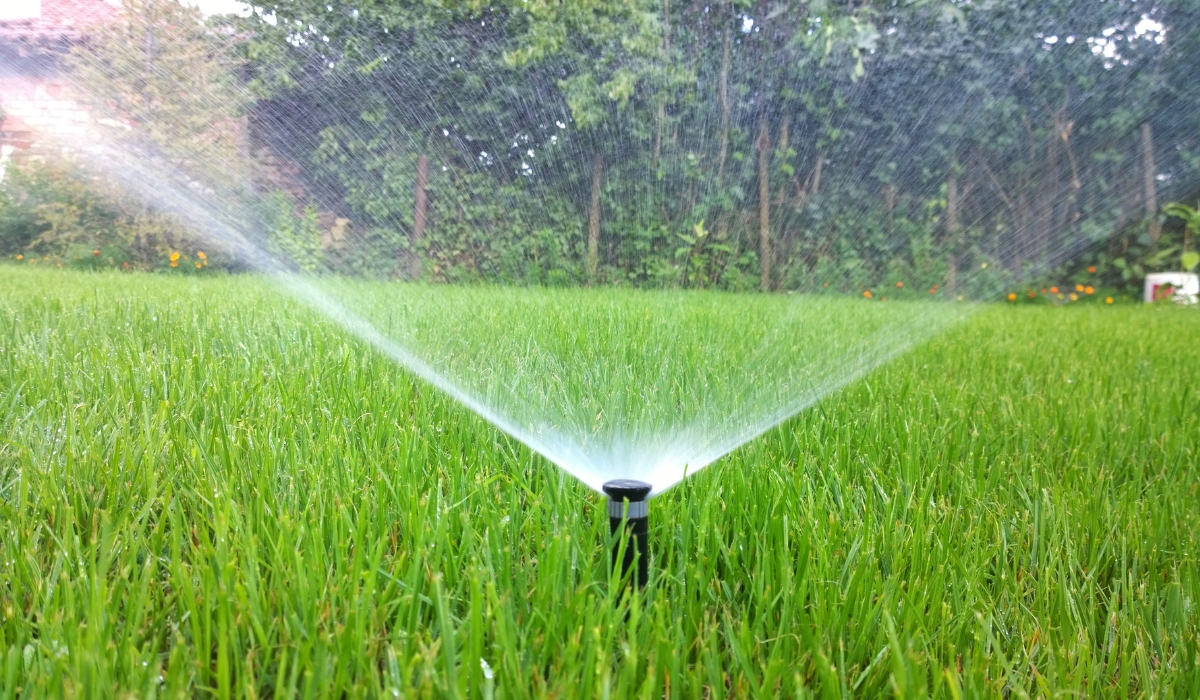
California summers are synonymous with sunshine, but also with the critical need for water conservation. At DK Landscaping, we believe that a beautiful garden and water efficiency don’t have to be mutually exclusive. In fact, by embracing smart design principles and the right plant choices, you can create a stunning, drought-defying landscape that flourishes through the dry season, all while being a responsible steward of our precious resources.
Design with Water in Mind: Principles for Efficiency
The foundation of a water-wise landscape starts with thoughtful design.
- Hydrozoning: Group plants with similar water needs together. This allows you to irrigate more efficiently, providing just the right amount of water to each zone without over- or under-watering.
- Reduce Lawn Area: Traditional lawns are notorious water guzzlers. Consider replacing thirsty turf with drought-tolerant groundcovers, permeable paving, or inviting hardscaping. Even a smaller, strategically placed lawn can significantly reduce water consumption.
- Improve Soil Health: Incorporate plenty of organic matter like compost into your soil. Healthy soil retains water more effectively, reducing runoff and making more moisture available to plant roots.
- Capture Rainwater: Explore options like rain barrels to collect rainwater from your roof for later use in your garden. This free water is perfect for supplemental irrigation during dry spells.
Plant Power: Thriving Through the Dry Season
The secret to a vibrant, water-wise garden lies in plant selection. California offers an incredible array of native and Mediterranean-climate plants that are naturally adapted to dry conditions.
- California Natives: Embrace the beauty of plants like Ceanothus (California Lilac), Manzanita, and various Sages (Salvia). They are perfectly suited to our climate, require minimal water once established, and provide habitat for local wildlife.
- Drought-Tolerant Exotics: Many plants from similar climates around the world, such as lavender, rosemary, succulents, and certain ornamental grasses, also thrive with very little water.
- Smart Plant Pairings: Combine plants with complementary textures and forms. Pair the bold shapes of agave with the delicate wisps of fountain grass, or the silvery foliage of ‘White Sage’ with the vibrant purple of ‘Victoria Blue’ Salvia for striking visual appeal.
Hardscaping with Purpose: Beauty and Function
Hardscaping plays a pivotal role in a water-wise landscape, reducing the need for thirsty plants while adding structure and beauty.
- Permeable Paving: Choose materials like decomposed granite, permeable pavers, or gravel for patios and pathways. These allow rainwater to filter into the ground rather than running off, replenishing groundwater.
- Attractive Patios & Decks: Create inviting outdoor living spaces that are naturally low-water. Furnish them with comfortable seating and drought-tolerant container plants for pops of color.
- Dry Stream Beds & Rock Gardens: These features can manage rainwater runoff effectively while adding an artistic, natural aesthetic to your garden, especially when combined with drought-tolerant plantings.
By integrating these design principles, making wise plant choices, and utilizing smart hardscaping, you can cultivate a landscape that not only withstands the dry California summer but thrives with captivating beauty and significantly reduced water consumption. Let DK Landscaping guide you in creating your own drought-defying oasis.
Fall in Love with Your Landscape (Again!): November Tips from DK Landscaping
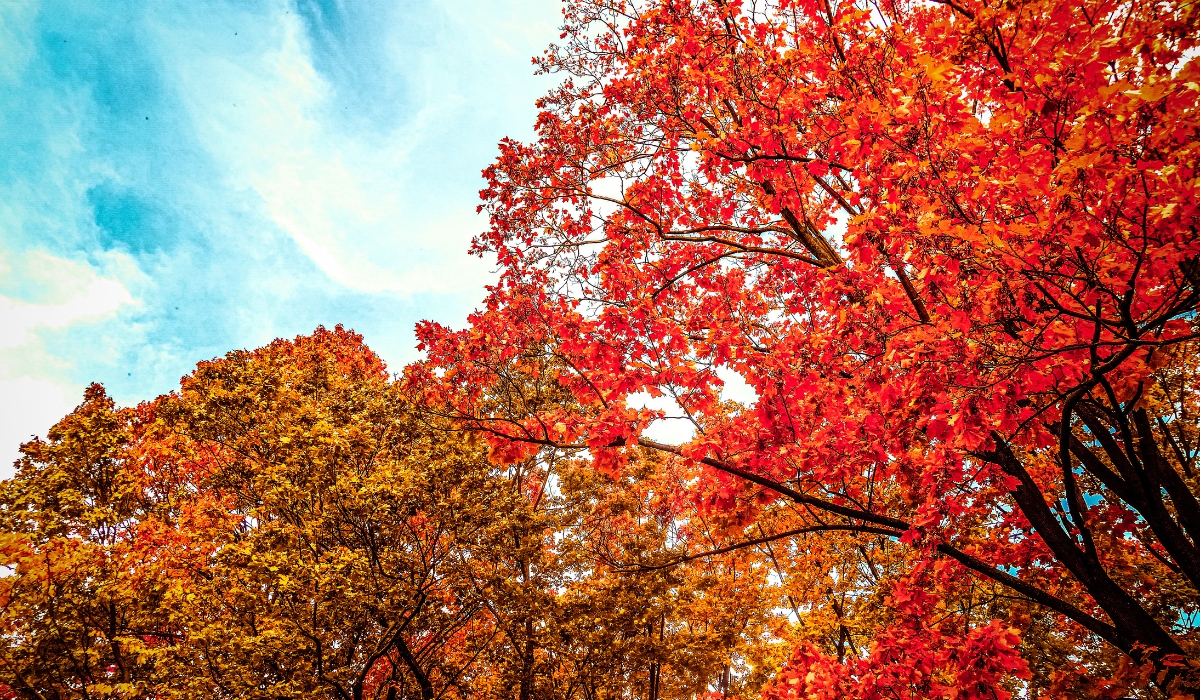
The air is getting crisper, the leaves are putting on their final, fiery show (though maybe with a little less intensity than our East Coast cousins!), and the scent of pumpkin spice is everywhere. Here in California, November marks a beautiful transition in our landscapes. While the scorching summer heat is a distant memory, it’s not quite time to huddle indoors just yet. In fact, November is a prime time to give your garden some much-needed attention and set it up for a thriving spring.
At DK Landscaping, we believe a well-maintained landscape is a year-round source of joy. So, grab a warm beverage, pull on your gardening gloves, and let’s dive into our top tips for making the most of your California garden this November!
Embrace the Post-Summer Refresh:
Summer can be tough on our plants. Now is the perfect time to assess the damage and give them some TLC:
- Deep Clean & Clear Out: Just like you might do a fall cleaning indoors, your garden needs one too! Rake up fallen leaves (they make great compost!), remove dead or diseased plant material, and clear out any lingering weeds that thrived during the warmer months. This helps prevent pests and diseases from overwintering in your garden.
- Pruning Power: Many shrubs and trees benefit from late fall pruning. Removing dead, damaged, or crossing branches improves air circulation and encourages healthy growth in the spring. Not sure where to start? Our experienced team at DK Landscaping can provide expert pruning services to ensure your plants are shaped and cared for correctly.
- Soil Love: After a long growing season, your soil might be depleted. Now is an excellent time to amend your soil with compost or other organic matter. This will improve drainage, aeration, and provide essential nutrients for the months ahead.
Watering Wisdom for Cooler Days:
While the temperatures are dropping, your plants still need water, just not as frequently as in the summer.
- Adjust Your Irrigation: Reduce your watering frequency and duration. Overwatering in cooler weather can lead to root rot. Observe your plants and the soil moisture levels to determine the right schedule.
- Water Deeply and Less Often: When you do water, water deeply to encourage strong root growth.
- Consider Rainfall: Keep an eye on the forecast! If we get a good amount of rain, you can likely skip a watering cycle.
Planting for the Future:
Believe it or not, November is a fantastic time for certain types of planting in California:
- California Natives: Many California native plants thrive when planted in the fall. The cooler, wetter conditions allow their roots to establish before the heat of summer arrives. Consider adding some beautiful and drought-tolerant natives to your landscape.
- Cool-Season Vegetables: If you enjoy fresh produce, now is the time to plant cool-season vegetables like lettuce, spinach, kale, broccoli, and garlic.
- Spring-Blooming Bulbs: Dreaming of vibrant tulips, daffodils, and hyacinths in the spring? Now is the time to plant those bulbs! They need the cool winter months to develop properly.
Don’t Forget the Details:
- Clean Your Tools: Before storing your gardening tools for the winter, clean and sharpen them. This will keep them in good condition and ready for action in the spring.
- Protect Tender Plants: If you have any frost-sensitive plants, consider moving them indoors or providing some form of protection on colder nights.
- Enjoy Your Space! Even with the cooler weather, take some time to appreciate the beauty of your fall landscape. It’s a different kind of beauty, but just as rewarding.
Ready to Give Your Landscape Some November Love?
At DK Landscaping, we’re passionate about helping you create and maintain a beautiful and healthy outdoor space year-round. Whether you need help with fall cleanup, pruning, planting, or simply want some expert advice, our team is here for you.
Contact DK Landscaping today for a consultation and let us help you fall in love with your landscape all over again this November!
Water-Saving Tips for Your Garden
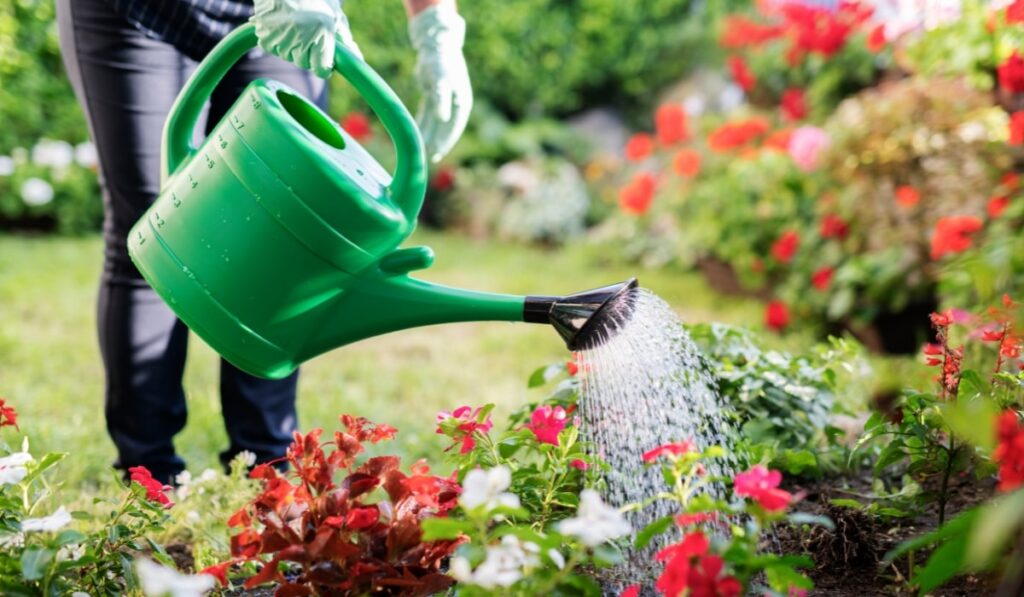
Gardening is a great way to beautify your home while also providing fresh produce. However, it can also be a significant source of water consumption. With water becoming an increasingly scarce resource, it’s important to find ways to conserve it. Water-saving tips for your garden can help you save water and reduce your water bill.
There are many ways to save water in your garden. One of the easiest ways is to choose plants that are well-suited to your climate and soil type. These plants will require less water and maintenance, saving you time and money. Another way to save water is to use mulch around your plants. Mulch helps to retain moisture in the soil, reducing the need for frequent watering.
In addition to these tips, there are many other water-saving techniques that you can use in your garden. From using drip irrigation systems to collecting rainwater, there are many ways to conserve water while still maintaining a beautiful garden. By implementing these tips and techniques, you can reduce your water consumption and help to protect this valuable resource.
Efficient Watering Practices
Understanding Soil and Plant Needs
One of the most important things to consider when it comes to efficient watering practices is understanding the soil and plant needs. Different types of soil have different moisture retention properties, which means that some soils will require more water than others. For example, clay soil tends to hold onto water for longer periods of time than sandy soil, which means that plants growing in clay soil will require less frequent watering.
Additionally, it’s important to consider the type of plants that are being grown in the garden. Native plants and drought-tolerant plants are great options for conserving water in the garden, as they are adapted to the local climate and require less water to thrive. On the other hand, plants that are not well-suited to the local climate will require more water to stay healthy.
Watering Techniques and Scheduling
Another important aspect of efficient watering practices is using the right watering techniques and scheduling. For example, morning watering is generally recommended as it allows plants to absorb moisture before the heat of the day causes evaporation. Deep watering is also important, as it encourages plants to develop deep root systems that can better withstand dry spells.
It’s also important to consider the timing and frequency of watering. Overwatering can lead to fungal diseases and runoff, which can be harmful to the environment. Gardeners should aim to water their plants only when necessary, and to avoid watering during periods of rain or high humidity.
Irrigation System Efficiency
For those who use an irrigation system, it’s important to ensure that the system is as efficient as possible. This can be achieved by using water-efficient emitters, installing a rain-shutoff device, and regularly checking and maintaining the system. Irrigation system controllers can also be used to schedule watering times and ensure that water is not wasted.
In addition to these tips, gardeners can also consider using rain barrels or other rainwater harvesting systems to save water in the garden. Mulching and composting can also help to conserve water and improve soil moisture retention. By following these water-saving tips and using efficient watering practices, gardeners can help to promote sustainability and conserve water in their gardens.
Sustainable Garden Design and Maintenance
Choosing the Right Plants
Choosing the right plants for a sustainable garden is crucial. Native plants, drought-tolerant plants, succulents, and perennials are great options for water-saving gardens. These plants require less water, are adapted to the local climate, and are more resistant to pests and diseases. Yucca and verbena are examples of beautiful and low-water-use plants that can thrive in a water-saving garden.
Mulching and Ground Cover
Mulching is an effective way to reduce water usage in the garden. Organic mulch such as lawn clippings, leaves, and compost can help retain moisture in the soil, prevent weed growth, and improve soil health. Ground cover plants such as creeping thyme, clover, or sedum also help to retain moisture and reduce erosion.
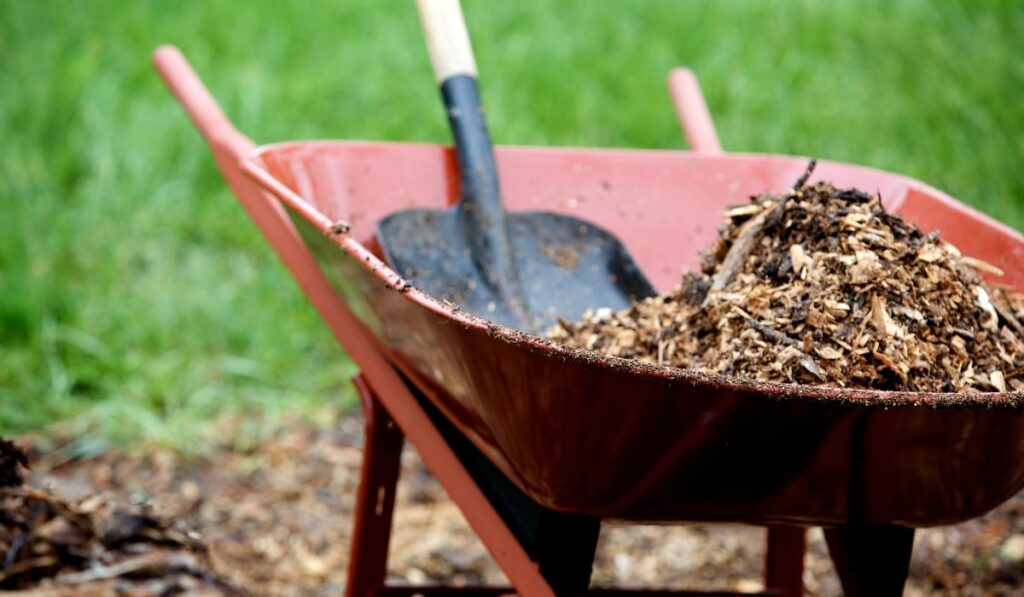
Alternative Water Sources and Collection
Using alternative water sources can be a game-changer for water-saving gardens. Rainwater harvesting is a great way to collect water for the garden. Installing a rain barrel or water tank can help to store and use rainwater for irrigation. Ollas are also a great way to save water. These clay pots are buried in the soil and slowly release water to the roots of the plants, reducing water waste and promoting plant growth.
By implementing sustainable garden design and maintenance practices such as choosing the right plants, mulching and ground cover, and using alternative water sources, gardeners can create beautiful and thriving gardens while conserving water and promoting sustainability.
Frequently Asked Questions
What are effective methods for reducing water usage in your garden?
There are several effective methods for reducing water usage in your garden. One of the most effective ways is to choose plants that are native to your region and are adapted to the local climate. These plants will require less water and maintenance compared to non-native plants. Additionally, using mulch around the plants can help retain moisture in the soil, reducing the need for frequent watering.
How can you conserve water when maintaining a vegetable garden?
To conserve water when maintaining a vegetable garden, it is important to water the plants deeply but less frequently. This encourages the roots to grow deeper and access water from lower layers of soil. Additionally, using drip irrigation or a soaker hose can help deliver water directly to the roots, reducing water waste. Using a rain barrel to collect rainwater can also provide a free source of water for your garden.
What are the benefits of watering plants early in the morning for water conservation?
Watering plants early in the morning is beneficial for water conservation because the cooler temperatures and lower wind speeds help reduce evaporation. Additionally, watering in the morning allows the plants to absorb the water before the heat of the day, reducing the risk of water stress.
What personal habit changes can lead to significant water savings in garden care?
Personal habit changes that can lead to significant water savings in garden care include using a broom instead of a hose to clean patios and driveways, fixing leaks in hoses and sprinklers, and using a bucket instead of a hose to wash cars. Additionally, reducing the frequency of lawn watering and using drought-tolerant plants can help save water.
How can you utilize greywater from showers and baths for gardening purposes?
Greywater from showers and baths can be utilized for gardening purposes by diverting the water to a holding tank or directly into the garden. However, it is important to use biodegradable and non-toxic soaps and detergents to avoid harming the plants. It is also recommended to use greywater for non-edible plants only.
What are the most efficient irrigation techniques for minimizing water waste in gardens?
The most efficient irrigation techniques for minimizing water waste in gardens include drip irrigation, soaker hoses, and micro-sprinklers. These methods deliver water directly to the roots of the plants, reducing water waste due to evaporation and runoff. Additionally, using a rain sensor or a smart irrigation controller can help adjust watering schedules based on weather conditions, further reducing water waste.
Flood-Resistant Yard Maintenance Tips For the Rainy Season
Mother Nature can be unpredictable. And if you live in Rohnert Park, your home could be part of 4,813 properties with a 26% risk of flooding. Water rushing through your yard, threatening to wash away all your hard work, and turning your lush oasis into a waterlogged nightmare, becomes a significant concern.
While there’s not much you can do to control the weather, there are steps you can take to ensure your yard is as flood-resistant as possible. Here are practical strategies to fortify your yard against floods, protect your precious plants, maintain proper drainage, and prevent erosion to keep your outdoor space looking its best, even when the water starts rising.

Choose Flood-Resistant Plants for Your Yard
Flood-resistant plants possess unique characteristics that allow them to withstand and thrive in waterlogged conditions, ensuring the resilience of your outdoor space during heavy rainfall or flooding events. Here’s how it works:
- Enhanced drainage: Water-loving grasses like blue grama, willows, cypress, and shrubs like elderberry have well-developed root systems that improve soil structure and drainage. Their extensive root networks act like natural sponges, absorbing excess water and preventing it from pooling on the surface. This reduces water accumulating in your yard, eliminating the potential for flooding.
- Erosion control: Heavy rainfall erodes soil, washing it away, which causes damage to your yard and nearby areas. Plants with deep and fibrous root systems help anchor the soil, preventing erosion while maintaining the integrity of your landscape.
- Water filtration and nutrient retention: Flood-resistant plant root systems act as natural filters, removing pollutants and sediment before the water reaches groundwater sources or nearby water bodies. These plants also absorb excess nutrients, like nitrogen and phosphorus, commonly found in stormwater runoff, effectively preventing water pollution.
When picking vegetation for your yard, opt for species native to Califonia, like buffalo grass. They have evolved and adapted to thrive in the local climate, soil conditions, and rainfall patterns, making them inherently more resilient to natural disasters.
Incorporating native flood-resistant plants further aligns your yard with the surrounding ecosystem, promoting biodiversity. Take advantage of online tools to help you find the most appropriate native species for your specific region in California.
Better Your Drainage System
A qualified yard maintenance rohnert park landscaper can help you improve how water moves and drains within your yard, effectively mitigating the risk of flooding and minimizing potential damage. Landscaping strategies to improve yard drainage include:
- Grading and contouring: Proper grading and contouring direct water towards suitable drainage outlets, such as swales or storm drains. The land should slope away from the center of the yard, guiding water to flow away from vulnerable areas. A skilled landscaper will evaluate the topography, re-level any spots where water pools, and make adjustments to ensure optimal drainage paths.
- Install French drains or catch basins: French drains and catch basins are effective drainage solutions that divert excess water from your yard. French drains consist of perforated pipes covered by gravel, facilitating water absorption. Catch basins, on the other hand, are underground structures that collect surface water and direct it to a suitable outlet. A professional can strategically install these drainage features in areas prone to flooding, preventing water from accumulating and causing damage.
- Gutter and downspout maintenance: Properly functioning gutters and downspouts are vital for effective drainage. A landscaper inspects and cleans your gutters regularly, freeing them from debris that causes blockages. Consider installing downspout extensions to direct water into proper drainage channels, preventing water from running into the yard.
- Rain gardens and bioswales: Rain gardens and bioswales are innovative landscaping techniques that improve drainage while enhancing your yard’s aesthetics. Rain gardens are shallow depressions filled with water-tolerant plants that can absorb and filter water. Bioswales are channels designed to collect and divert water, allowing it to infiltrate the ground gradually. Both features contribute to efficient water management, reducing the risk of flooding.
- Permeable paving: Replace impermeable surfaces, such as concrete or asphalt, with permeable alternatives like gravel, permeable pavers, or porous asphalt. These materials allow water to infiltrate the ground instead of pooling on the surface. Permeable paving also aids in drainage but also helps recharge groundwater resources.
- Add rain barrels: During heavy rains, the barrels capture and store stormwater that would otherwise flow into your yard, contributing to localized flooding. These innovative solutions save water, reduce water bills, promote sustainable gardening, and benefit soil and plant health.
Apply Hardwood Mulch
When applied as a protective layer on the soil surface, hardwood mulch acts as a barrier, preventing rainwater from directly impacting the soil and grass. Instead, water penetrates the soil gradually, promoting better infiltration and reducing runoff.
By improving soil structure, hardwood mulch helps create a more porous and well-drained soil, increasing the yard’s capacity to absorb and retain water during heavy rains. Hardwood mulch is preferred as it lasts longer and resists floating away better than lighter mulches.
Find a Qualified Yard Maintenance Rohnert Park Landscaper
From selecting water-loving plants to improving drainage systems, taking proactive measures is key to creating a flood-resistant yard. To guarantee the best results, seek the assistance of a qualified, credible, and licensed landscaping company. Take action today and partner with professionals to transform your yard into a beautiful, resilient haven that stands strong against the forces of nature.
Landscape Irrigation: Best Practices and Tips
Mother Nature provides water for plants to help them grow. However, rainfall may not always be enough to maintain a healthy landscape and eye-catching beauty. That’s where irrigation comes in.
When done properly (preferably by a landscape expert), irrigation helps plants thrive when natural sources can’t satisfy your landscape’s water needs. To give you insights into the best watering techniques, we walk you through the following:
- Proper irrigation practices
- Water-saving irrigation techniques
- The ideal time to water your yards for the best results
If you don’t have the time to deal with irrigation equipment or implement best practices, a landscape maintenance company can do the heavy lifting. That said, understand what irrigation is and why it is essential in maintaining landscape beauty.
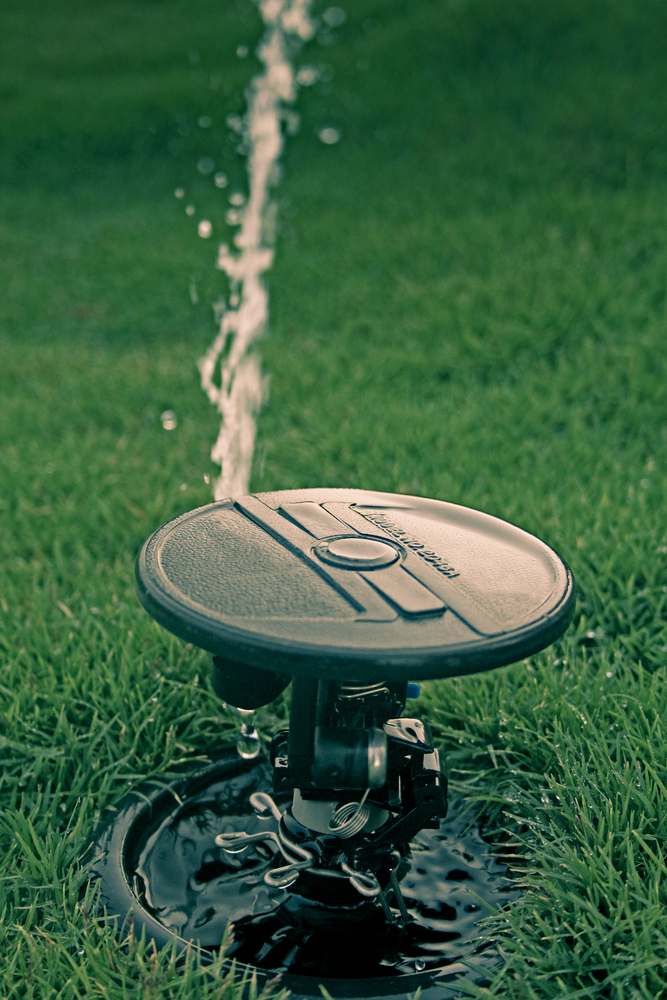
What Is Irrigation? (And Why It’s Important)
Relying on rainfall alone as your plants’ water source may not be enough during hot seasons or in areas with sparse or seasonal precipitation. In that case, watering your yards or gardens using pipes, sprinklers, or other artificial methods helps improve plant growth and quality.
Irrigation keeps your outdoor space looking pristine and green. When done properly (like with an expert), it can prevent patches in your landscape commonly caused by insufficient water. That said, you only enjoy the benefits of irrigation if you implement the right practices.
Top 3 Landscape Irrigation Tips
Here are some of the best practices when implementing landscape irrigation:
1. Leverage Mulching When Watering Specific Landscape Areas
Mulching means covering the soil surface around plants with an organic or synthetic substance to help conserve moisture by reducing evaporation after irrigation. You can buy mulch on Amazon and use it to preserve moisture when watering landscape trees, annuals, perennials, or woody plants.
When mulching is a water-saving technique, it’s important to do it right. Your mulch should not touch the stem of the plants or the trunks of landscaping trees, an improper practice called volcano mulching. Ensure the mulch is only covering the roots. That way, you prevent wet conditions on plant stems that can cause diseases.
2. Consider Drip Irrigation to Save Water
Drip irrigation is a watering method that uses a system attached to a water source and its components arranged throughout your landscape. Because it supplies water directly to plant roots, drip irrigation prevents water loss from run-off, evaporation, and overwatering. For this reason, a well-installed drip system can use up to 50% less water than conventional sprinklers.
3. Take Advantage of Regular Landscape Maintenance
Routine system checkups ensure your irrigation equipment is working correctly. Regular assessment helps identify and fix water-wasting problems before they impact your water bill.
Consider hiring a landscape maintenance company to inspect your systems at least yearly, especially at the beginning of the irrigation season. The company will check whether your irrigation system works efficiently and adjust features accordingly. The professional can also repair leaks and other system problems to save water.
However, not all landscaping companies are the same. Compare your options and choose one that is experienced and has an excellent track record. How long they’ve been in the industry, and online reviews should tell you who to hire.
Bonus Tip
Another way to save irrigation water is to use native plants. These plants are well adapted to the local climate and soil conditions. Therefore, they can thrive in their original environment.
For this reason, they require much less watering than foreign species because they can easily survive with the water supplied naturally by Mother Nature in their native environment. For instance, many native Midwestern plants in the US have deep root systems, which increase the soil’s capacity to store water.
What’s the Ideal Time of Day to Water Your Garden or Yard?
Irrigate in the morning, especially if you use overhead irrigation methods like sprinklers. Because leaf wetness increases the risk of plant diseases, irrigating in the morning gives plants enough time to dry during the day. Additionally, morning is the best time to irrigate because it allows water to sip into the soil—irrigating in mid-day heat when the high evaporation rate results in a lot of moisture escaping into the atmosphere.
Reliable Landscape Irrigation Services
Although it is possible to design a landscape that depends solely on rainfall, irrigation is sometimes necessary to maintain landscape health and aesthetic beauty. It supplies water to plants when needed most to ensure they thrive, even during seasons with much heat and little-to-no rain.
That said, proper landscape irrigation requires skills and enough time investment to get it right. If you don’t have time to implement irrigation best practices or just want to avoid guesswork, it’s best to hire a landscaping professional.
The professionals ensure your irrigation system is installed and functioning correctly. It can also be a way to identify water-saving opportunities in landscape irrigation. We specialize in water-saving landscape design (xeriscape), maintenance, repair, and irrigation. Contact us today to schedule an appointment.
A Closer Look at Irrigation Systems – Part 2
Today irrigation systems vary, where some techniques used can be simple and some a bit more complicated, however the big question is which one will be best for your garden? To properly answer that question it would be best to take a look at the different types of irrigation systems, how they work and the benefits each offer.
Irrigation Types and Benefits
SURFACE IRRIGATION
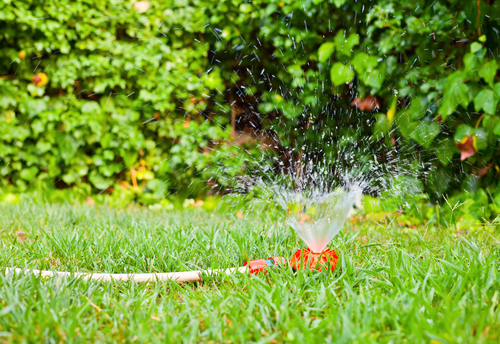
Surface irrigation is one of the oldest and most common methods of irrigation used. Dating back as far as far as the Egyptian and Mesopotamian civilizations this method uses the force of gravity to distribute water into the soil.
Later referred to as flood irrigation, simply because it allows water to flow and pool into an area, this is not as efficient as other irrigation methods because overwatering can occur, however it has still been successfully used throughout the centuries to produce healthy crops and lush, beautiful gardens.
Let’s Observe The Benefits You Can Get With Surface Irrigation
- Surface irrigation systems cover a large area of land in a faster time than that of other irrigation systems.
- It requires less manual labor.
- Irrigation systems are not negatively impacted by winds or sediments.
Depending on the type of gardening you do, you can determine if this type of irrigation system is more effective for you, however if you live in an area where water regulations are strict you may want to utilize a more conservative irrigation method.
SUB-SURFACE IRRIGATION
Similar to that of the low-drip method, sub-surface irrigation works by distributing water through tubes and emitters. As you can probably guess by the name of this system, the tubes that distribute water throughout this system are located below the surface of the soil.
Brought about in the 60’s as a way to deal with water scarce landscapes, this system works best in areas that are hot, arid, or windy to effectively provide plants with the water they need to thrive.
The Benefits Of Sub-Surface Irrigation Include
- By eliminating surface water sub-surface irrigation prevents water evaporation in hot and arid conditions.
- Reduces weed growth by depriving weed seeds of water.
- Because it’s below the ground, it protects the system from damage caused by animals or machinery.
If for some reason you still have a few unanswered questions on what irrigation method would be best for your landscape, then DK Landscaping is here to offer that expert advise you need.
Just a call or click away we can come in to evaluate your property and help you to decide on, and install an irrigation system that is not only efficient but effective enough to maintain the integrity of your landscape.
Contact us today at (707) 280-3632 to book an appointment or you can visit our website dklandscaping.com for more information.
Turn to the Pros for a Professional Sprinkler System Design
Xeriscaping is a water-wise approach to gardening that reduces water use and maintenance in your front and backyards. An efficient sprinkler system design helps you maintain a healthy landscape, saves you money on your water bill, and helps maintain your home’s curb appeal.
Working with a professional sprinkler system design and installation firm has many benefits, including:
- Working with certified designers who can help you create a personalized, economical solution for your sprinkler system.
- Access to experts who understand the most efficient layout for irrigation system elements.
- Layout designs and maps that are minimally invasive.
- Identifying and maximizing coverage zones and spray patterns.
- Accurately measuring the landscape so the job is done right the first time.
Basics of Sprinkler System Design
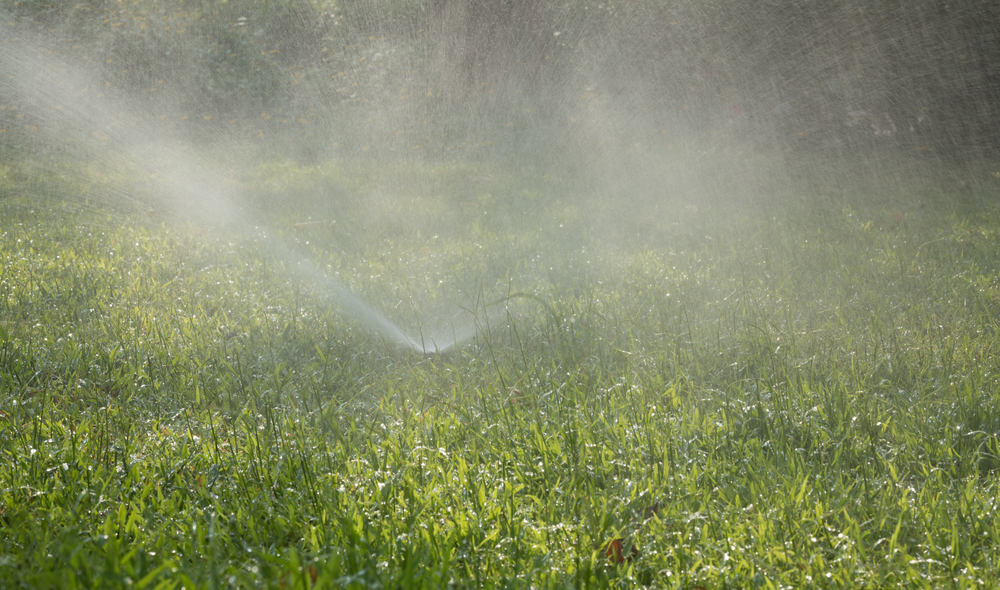
There’s a lot that goes into designing, installing, and maintaining the right sprinkler system for your home. In addition to the traditional spray system, low water use irrigation systems often utilize features like smart timers and drip systems.
A good irrigation system not only improves water use efficiency, it also protects the water’s quality and is sensitive to the environment. The goal is to maintain a healthy, functional landscape without exceeding minimal water requirements of the plants or the maximum water allowance in your area.
Here are some of the points you should discuss with your sprinkler system designer .
- What are the ideal areas for the plants you want to install and how will the system be designed to avoid wasting water on plants and shrubs that require different needs?
- Is your home’s water pressure able to handle the proposed sprinkler system components? For example, high pressure can cause water to drift and blow away from the area you want to water.
- Does it make sense to install a rain sensor that pauses the system whenever it rains?
- Does the design work to prevent overspray onto patios, decks, driveways, paths, and sidewalks?
You’ll also want a watering schedule for your timed system. One of the greatest recent innovations has been the introduction of smart controllers into sprinkler system design. These systems decrease water use by drawing on data from weather and soil moisture sensors to accurately determine your landscape’s water needs, delivering just enough moisture at just the right time. You can even monitor and control different zones from your mobile device!
Learn More
Designing, installing, and maintaining a sprinkler system is not a small investment but it can be a smart one that will serve you for years to come. No one knows better than California homeowners that water is an extremely valuable resource for all our communities. Working with a professional sprinkler system design and installation company like DK Landscaping ensures you get an irrigation system that is perfect for all your landscape needs.
If you’re ready to get started on designing and installing a new water-smart irrigation system for your Sonoma County home, contact us today. We’d love to show you how a sprinkler system creates not only a more beautiful yard but a more beautiful life for you and your family!
Types of Irrigation Systems for Residential Yards
In the past, homeowners overlooked the essence of a well-maintained yard. They focused only on their interiors. Nowadays, people realize that guests base their perception of their homes on their exteriors. Moreover, most entertainment in homes now happens outdoors because of dwindling indoor spaces. As such, getting and maintaining the best-looking front and backyard is essential.
Besides picking the right plants, you need a yard maintenance Santa Rosa company to institute the right irrigation system to keep your plants thriving. Some homeowners assume that any irrigation system will do. Others believe that hand watering can work though this is often a hassle, more so for busy people and those with large outdoor spaces.
Without a sound irrigation system, your plants will die and leave your outdoors looking drab. Below are the irrigation system options you have for your outdoors.
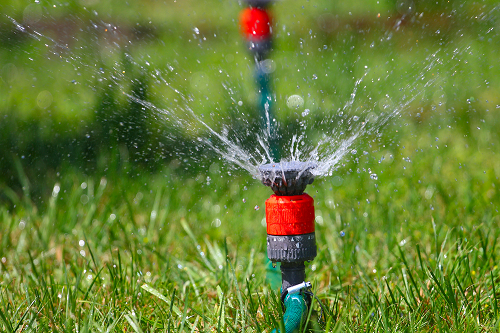
Drip Irrigation
When you have different plants to care for in your yard, it is best to use a drip irrigation system. This allows the fine-tuning of the amount of water that your plants get. In a drip irrigation system, porous hoses are laid throughout your yard to deliver water directly to the roots of your plants. Since plants shade the hoses, there is little water lost through evaporation, even in hot weather.
Some drip irrigation systems have in-built timers attached to special emitters to allow plants that need more water to get it at specified times. This minimizes the hassle of watering plants because all you do is set the timer to ensure your plants get enough moisture. Though it guarantees efficient water use and reduces weed growth, drip irrigation works best for small yards.
There is a variant of the drip irrigation system known as the rain catchment drip irrigation system. It is integrated with rain barrels that collect water before distributing it to your plants through porous hoses. This option works through simple gravity that pushes water through pipes down a slope.
Subsurface Irrigation
This is similar to the drip irrigation system because it distributes water through tubes and emitters. However, unlike in the latter, the pipes in a subsurface irrigation system are underground. This minimizes losses from evaporation and allows water to be pushed under low pressures, thus allowing the use of smaller pumps. Furthermore, a subsurface irrigation system allows direct delivery of water to plant roots without hideous pipes running across your yard.
Sprinkler Irrigation
In a sprinkler irrigation system, water will be supplied to your yard overhead like a downpour rather than directly to the roots of a plant. Though there are several types of sprinkler irrigation systems available, they all work the same way. They are the most versatile alternatives for large yards with the same plants because they spread water over a large space.
Sprinkler irrigation systems do not rely on gravity like other options. Therefore, they can be used on almost all land topographies. Moreover, the systems are easier to maintain and work exceptionally well for plants that need regular watering.
In hot months, it is best to use sprinklers in the evenings and early mornings. Irrigating your yard in the middle of the day will only lead to the evaporation of the water and less water reaching your plant’s roots. Sometimes, a yard maintenance Santa Rosa agency can recommend setting up timers for your irrigation system to ease their use and efficacy.
Bubbler Irrigation System
Bubbler irrigation systems are a cross between drip and sprinkler systems. They deliver a lot of water to plants, but only from about six inches above the ground. You can include timers on them and focus on their emitters so that only specific plants are watered at different times. Bubbler irrigation systems are ideal for yards with many identical plants in the same small location. They also work for raised plant beds, small trees, and shrubs.
Though bubbler irrigation systems are highly efficient and save about 75% water, they have high initial costs. Moreover, in very sandy soils, the high filtration rates make it challenging to get uniform water distribution in a place.
When considering which of the above irrigation systems works best for your yard, you should consider your plants and your land’s gradient. For example, bubbler irrigation systems work for gardens with homogenous species or large plants. On the other hand, drip irrigation systems work best for yards with different plants with varying needs.
You can also use multiple types of irrigation systems for your yard to maximize the benefits of watering your land. With the easy access to information online nowadays, you might assume that a yard maintenance Santa Rosa specialist is an unnecessary expense in your household budget. However, without a specialist to guide your choice of an irrigation system that best works for your landscape, getting a perfect yard will be challenging and sometimes impossible. Contact us for more information.
Irrigation Installation for Corporations
Irrigation installation involves meticulous planning and setting up a layout that can consistently provide water for a landscape area. Corporations and establishments are responsible for taking care of their lawns as long as the business is up and running. It is quite tedious to get a steady source of water for landscapes, especially in an area that is short of water supply. Also, some plants need adequate water, while others do not require much because of their ability to conserve water. An administrator of a corporate entity needs to understand and install irrigation according to the needs of the lawn plants and the office location. Corporations have responsibilities to handle, so administrators should hire a lawn care specialist that can assist them with the irrigation process.
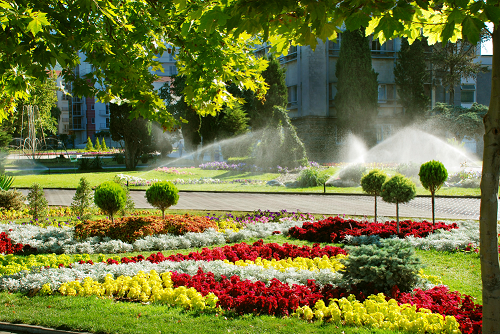
To deploy an irrigation system, the manager, the representative of the firm, and the supervisor of the installation company will come together to discuss how the project will pan out. The process usually begins with examining the site topography and establishing where the service provider will install the water meter. The service provider is also responsible for laying out the design and setting up the plumbing part of the project. With the aid of technology, one can design an irrigation system that suits a landscape with a computer software package. The design must show where the power source, valves, mainlines, sublines, sprinkler heads, and other peripheral connections.
The service provider should be able to advise the corporation on the best method of irrigation for your lawn. When we have to consider expenditure, sprinkler irrigation systems are more expensive than drip irrigation because of the plumbing work and automated controlling unit. In 2020, a sprinkler system requires an average cost of $3000 or more per one-quarter of an acre of land, while a drip method requires a lesser budget of $2000 per acre of land. So, an administrator may intend to choose the subsurface drip method based on cheap quotation; however, if one considers the benefit of control and flexibility which sprinkler method offers, then he/she may decide to opt for the latter. Lawn care specialists prefer to harness this method due to the two reasons listed. Drip irrigation is not ideal for lawn maintenance, but it will help to sustain the growth and lushness of flower beds and shrubbery.
Besides, the supervisor of the installation project can adopt hydro zoning for the sprinkler system. Hydrozoning is a way of segregating plant species based on the quantity of water they need to survive. So, the lawn expert cultivates each plant species together to form an assemblage. Then, the sprinkler directs the water to each plant cluster so that the plants will generally have sufficient water. Contact us for more information.
Irrigation Options for Landscaping
Landscaping is the concept of redecorating a piece of land or a yard area with natural greenery like plants, flowers, shrubs, and trees. One must follow the prerequisite that backs landscaping concepts to maintain a green and lush garden. It is known as Irrigation. Irrigation is a synthetic procedure by which landscape contractors dispense water on greenery, on a piece of land, that is deficient of consistent water supply.

There are several ways by which homeowners can practice landscape irrigation. They are drip, sprinkler, blended systems, terraced, center pivot, and central control system. In this post, we shall expound these ways in terms of usage and importance.
Drip Irrigation
The most instrumental on the list is drip irrigation; although, one can zero in on its inadequacies. The propitious facet of this technique is that it keeps hold of the water, averts any underlying complication from water run-off, and keeps financial expenses extremely low. Furthermore, it lessens the amount spent on machinery and human resource.
It works by using a plastic pipe and tubing system to dispense water to the roots and stems of plants at a resorbable rate. The emitters (or drippers) discharges water steadily, at a possible interval of 2 to 20 liters every hour, through a stretched, big channel which then passes out of the vent.
Drip irrigation is a preferable choice for irregularly shaped topography or breezy areas. You can integrate this irrigation technique with a smart irrigation controller system for improved flexibility and energy management.
Sprinkler Irrigation
The sprinkler irrigation system is the type that harnesses a pipe and sprinkler head system combined for drenching the plants from the top. The sprinkler heads can withdraw itself or extend when you are watering the plants. The pitfall of using this method is evapotranspiration, which is the loss of water present on the leaves and stem of plants. The only way to confront this issue is to embrace the smart irrigation controller technology. By doing so, you will conserve the moisture as the controller documents the current weather conditions.
This type of method is mainly suitable for residential and office apartments. One can deploy this sprinkler system by hiring a specialized company at a price ranging from $1500 to $6000. If you seek to set up this system you will need to drive to a lawn specialist, sit down and plan then set up an improvised version for as low as $500.
Center Pivot Irrigation
This system of irrigation technique works by conveying water from a dependable wellspring stationed in the heart of the landscape and spurting water on the plants in a discoid motion. A system of hoses or sprinklers is responsible for wetting the plants underneath the maneuvered towers.
In this method, the landscapers have an idea of the appropriate quantity of water that the vegetation needs and the frequency of water supply. Landscapers leverage on full rotation, and three days recess that allows the periodic drying. It enables the spreading surplus quantity of water that will not quickly vanish off the soil surface.
Contact us for more information on how you can get the most out of any new irrigation system. Our expert team at DK Landscaping will provide you with sound advice on how you can achieve top results.





